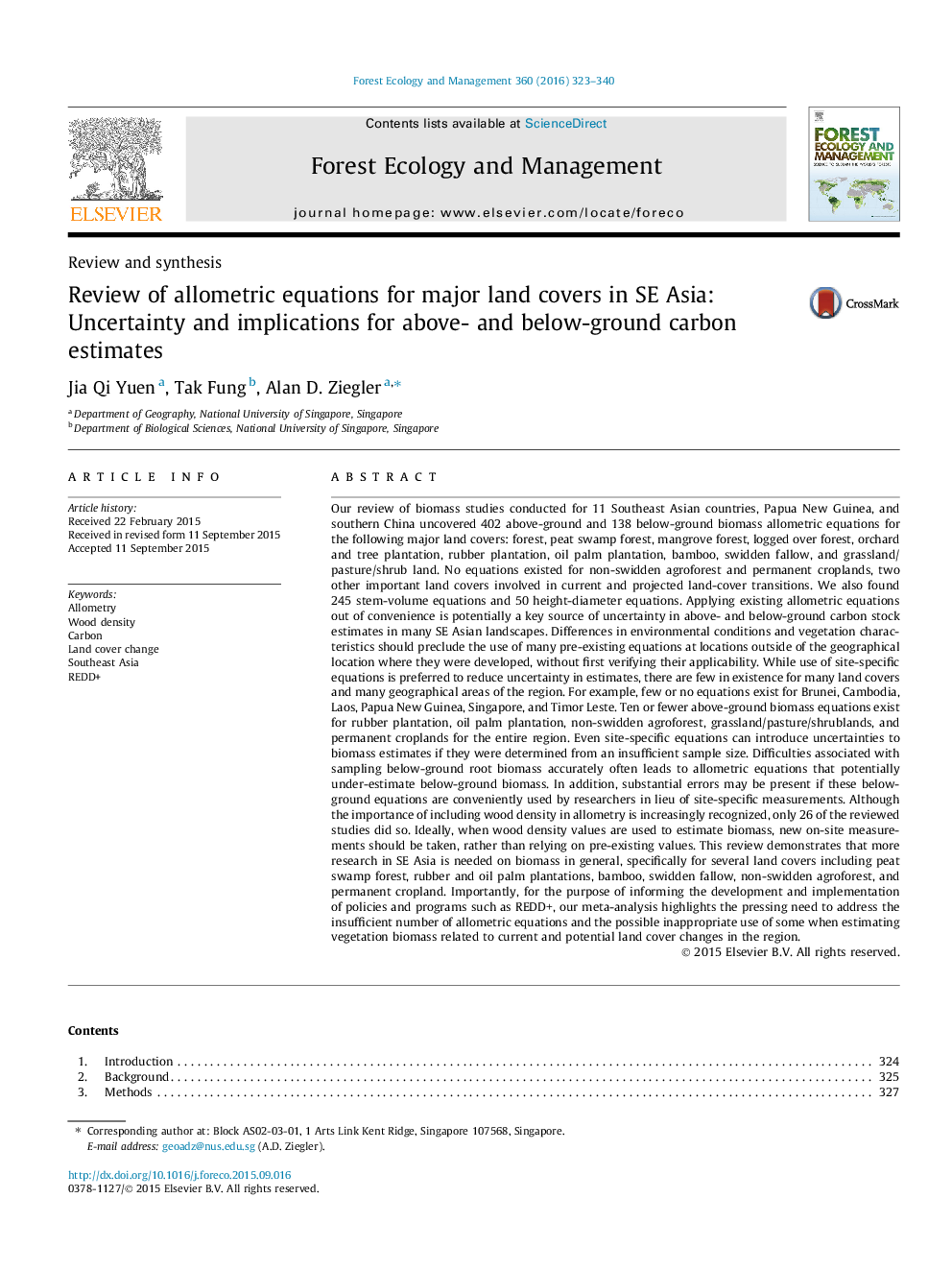| کد مقاله | کد نشریه | سال انتشار | مقاله انگلیسی | نسخه تمام متن |
|---|---|---|---|---|
| 6542593 | 159162 | 2016 | 18 صفحه PDF | دانلود رایگان |
عنوان انگلیسی مقاله ISI
Review of allometric equations for major land covers in SE Asia: Uncertainty and implications for above- and below-ground carbon estimates
ترجمه فارسی عنوان
بررسی معادلات آلومتریک برای پوششهای اصلی زمین در جنوب آسیا: عدم اطمینان و پیامدهای برآورد کربن بالا و زیر زمین
دانلود مقاله + سفارش ترجمه
دانلود مقاله ISI انگلیسی
رایگان برای ایرانیان
کلمات کلیدی
موضوعات مرتبط
علوم زیستی و بیوفناوری
علوم کشاورزی و بیولوژیک
بوم شناسی، تکامل، رفتار و سامانه شناسی
چکیده انگلیسی
Our review of biomass studies conducted for 11 Southeast Asian countries, Papua New Guinea, and southern China uncovered 402 above-ground and 138 below-ground biomass allometric equations for the following major land covers: forest, peat swamp forest, mangrove forest, logged over forest, orchard and tree plantation, rubber plantation, oil palm plantation, bamboo, swidden fallow, and grassland/pasture/shrub land. No equations existed for non-swidden agroforest and permanent croplands, two other important land covers involved in current and projected land-cover transitions. We also found 245 stem-volume equations and 50 height-diameter equations. Applying existing allometric equations out of convenience is potentially a key source of uncertainty in above- and below-ground carbon stock estimates in many SE Asian landscapes. Differences in environmental conditions and vegetation characteristics should preclude the use of many pre-existing equations at locations outside of the geographical location where they were developed, without first verifying their applicability. While use of site-specific equations is preferred to reduce uncertainty in estimates, there are few in existence for many land covers and many geographical areas of the region. For example, few or no equations exist for Brunei, Cambodia, Laos, Papua New Guinea, Singapore, and Timor Leste. Ten or fewer above-ground biomass equations exist for rubber plantation, oil palm plantation, non-swidden agroforest, grassland/pasture/shrublands, and permanent croplands for the entire region. Even site-specific equations can introduce uncertainties to biomass estimates if they were determined from an insufficient sample size. Difficulties associated with sampling below-ground root biomass accurately often leads to allometric equations that potentially under-estimate below-ground biomass. In addition, substantial errors may be present if these below-ground equations are conveniently used by researchers in lieu of site-specific measurements. Although the importance of including wood density in allometry is increasingly recognized, only 26 of the reviewed studies did so. Ideally, when wood density values are used to estimate biomass, new on-site measurements should be taken, rather than relying on pre-existing values. This review demonstrates that more research in SE Asia is needed on biomass in general, specifically for several land covers including peat swamp forest, rubber and oil palm plantations, bamboo, swidden fallow, non-swidden agroforest, and permanent cropland. Importantly, for the purpose of informing the development and implementation of policies and programs such as REDD+, our meta-analysis highlights the pressing need to address the insufficient number of allometric equations and the possible inappropriate use of some when estimating vegetation biomass related to current and potential land cover changes in the region.
ناشر
Database: Elsevier - ScienceDirect (ساینس دایرکت)
Journal: Forest Ecology and Management - Volume 360, 15 January 2016, Pages 323-340
Journal: Forest Ecology and Management - Volume 360, 15 January 2016, Pages 323-340
نویسندگان
Jia Qi Yuen, Tak Fung, Alan D. Ziegler,
